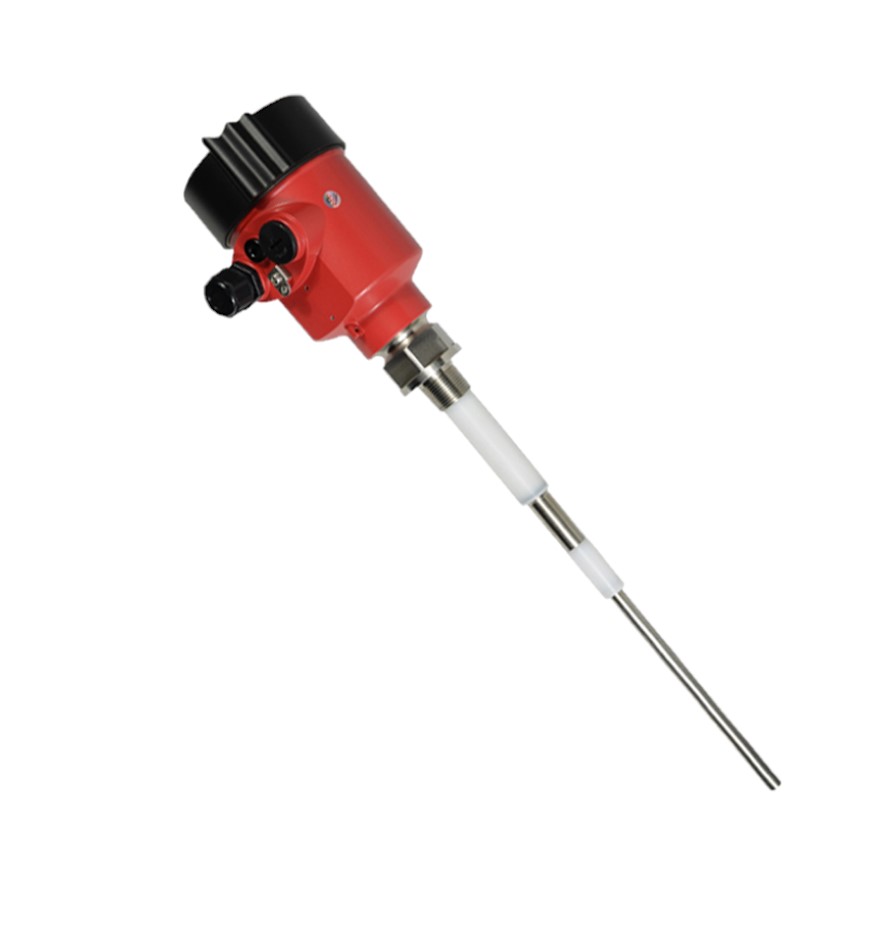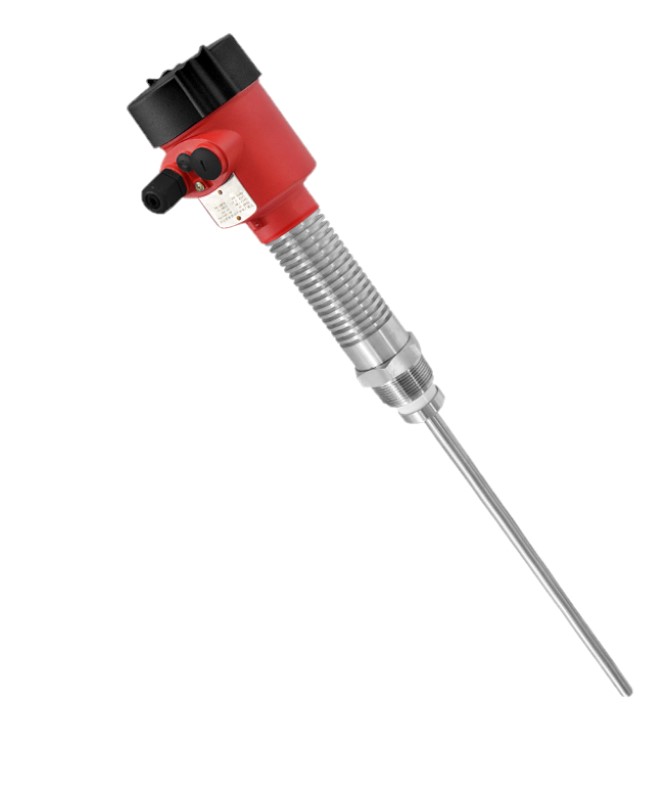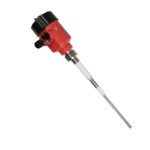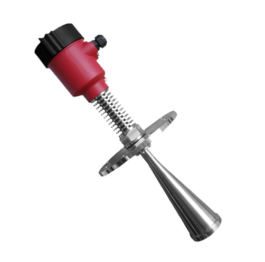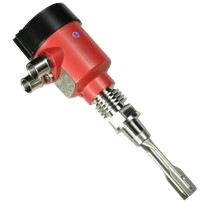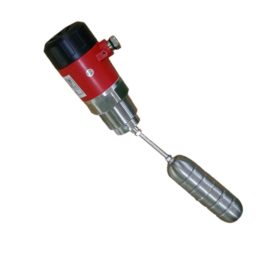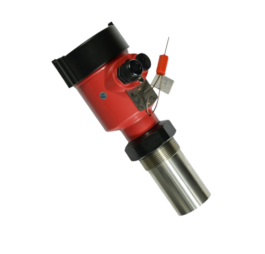Description
Capacitive Level Sensor: Precision and Reliability for Industrial Applications
In the fast-paced world of industrial automation, accurate level measurement is critical for efficient operations. The Capacitive Level Sensor stands out as a robust and versatile solution, delivering precise monitoring of liquids, solids, and slurries across diverse industries. This advanced sensor leverages capacitance changes to detect material levels, offering unparalleled reliability in challenging environments. Whether managing water treatment systems or overseeing chemical processing, this sensor ensures seamless integration and consistent performance.
How It Works: The Science of Capacitance
The Capacitive Level Sensor operates on a simple yet effective principle. It measures changes in capacitance caused by the presence or absence of material between two electrodes, typically a probe and the tank wall or a second electrode. When material, such as liquid or granular solids, enters the sensor’s field, it alters the dielectric constant, triggering a measurable capacitance shift. Consequently, the sensor translates this change into a precise level reading. This method excels in detecting a wide range of materials, from water and oils to powders and slurries, provided the material’s dielectric constant exceeds 1.5. Moreover, the sensor’s design eliminates moving parts, reducing wear and ensuring long-term durability.
Unmatched Versatility Across Applications
This sensor thrives in diverse industrial settings. In water treatment plants, it monitors tank levels to optimize resource management. Similarly, in the chemical industry, it handles corrosive liquids with ease, thanks to its durable probe materials. The food and beverage sector benefits from its sanitary design, with FDA-compliant options ensuring compliance with strict hygiene standards. Additionally, the sensor excels in bulk solids storage, accurately measuring materials like grains, cement, or plastic pellets. Its ability to adapt to liquids, solids, and slurries makes it a go-to choice for industries seeking flexibility without compromising precision.
Robust Design for Harsh Environments
Durability defines the Capacitive Level Sensor. The probe, constructed from 316 stainless steel or PTFE-coated materials, resists corrosion and withstands extreme conditions. It operates effectively in temperatures ranging from -40°C to 150°C, with high-temperature probe options available for specialized applications. Furthermore, the sensor supports pressures up to 10 bar, making it suitable for pressurized tanks. The IP67-rated aluminum or stainless steel enclosure protects against dust and water immersion, ensuring reliable performance in harsh environments like chemical plants or outdoor storage facilities. This rugged construction minimizes maintenance needs, allowing operators to focus on productivity.
Precision and Performance You Can Trust
Accuracy drives the sensor’s appeal. It delivers a measurement range of 0.1 m to 5 m, customizable based on probe length, with an impressive accuracy of ±1% of full scale. The sensor’s resolution, at 0.1% of the measured range, ensures fine-tuned detection for even the smallest level changes. Additionally, its rapid response time of less than one second provides real-time data, critical for dynamic processes. Operators can rely on this precision to maintain optimal inventory levels, prevent overflows, or ensure consistent production quality. The sensor’s ability to perform consistently across varying material properties further enhances its dependability.
Flexible Integration for Seamless Operations
The Capacitive Level Sensor integrates effortlessly into existing systems. It offers multiple output options, including 4-20 mA, 0-10 V, Modbus RTU, or relay outputs, catering to diverse control systems. This flexibility ensures compatibility with PLCs, SCADA systems, or other automation platforms. Moreover, the sensor supports a power supply range of 12-36 VDC, accommodating standard industrial setups. Installation is straightforward, with options for top-mounted, side-mounted, or cable-type configurations for deep tanks. Process connections, such as 1″ NPT, flanged, or tri-clamp for sanitary applications, simplify integration into various tank designs. This adaptability streamlines setup and reduces downtime during installation.
Low Maintenance, High Efficiency
Maintenance often burdens industrial operations, but the Capacitive Level Sensor minimizes this concern. Its lack of moving parts eliminates mechanical wear, extending the sensor’s lifespan. Periodic cleaning prevents material buildup on the probe, particularly in sticky or viscous applications. Additionally, the sensor arrives factory pre-calibrated, though field calibration accommodates specific materials for optimal performance. This low-maintenance design reduces operational costs and ensures consistent uptime. As a result, industries can focus on production rather than frequent sensor upkeep.
Safety and Compliance for Specialized Needs
Safety remains a priority in industrial environments, and this sensor delivers. Optional ATEX certification ensures safe operation in hazardous areas, such as those with flammable gases or dust. For food and beverage or pharmaceutical applications, FDA-compliant materials guarantee adherence to stringent regulatory standards. These certifications provide peace of mind, allowing operators to deploy the sensor in sensitive or high-risk settings without compromising safety or compliance. The sensor’s robust design and certifications make it a trusted choice for industries with rigorous operational requirements.
Why Choose the Capacitive Level Sensor?
Several factors set this sensor apart from alternatives. Unlike ultrasonic sensors, which struggle with foam or dust, the capacitive sensor maintains accuracy across diverse materials. Compared to float sensors, its lack of moving parts reduces maintenance and enhances reliability. Radar sensors, while accurate, often come with higher costs and complex setups, whereas the capacitive sensor offers a cost-effective yet precise solution. Its ability to handle a wide range of materials, from conductive liquids to non-conductive solids, provides unmatched versatility. Additionally, the sensor’s compact design and ease of installation make it a practical choice for both new installations and retrofits.
Enhancing Operational Efficiency
By delivering real-time, accurate level data, the Capacitive Level Sensor optimizes industrial processes. It prevents costly overflows, ensures efficient material usage, and supports automated control systems. For example, in water treatment, it maintains precise water levels to avoid pump damage or system inefficiencies. In chemical processing, it ensures consistent batch quality by monitoring ingredient levels. Similarly, in bulk solids storage, it prevents overfilling, reducing waste and improving safety. This sensor empowers operators to make informed decisions, boosting productivity and reducing operational risks.A Future-Ready SolutionAs industries evolve, the need for reliable, adaptable, and efficient sensors grows. The Capacitive Level Sensor meets these demands with its advanced technology and robust design. Its ability to integrate with modern automation systems positions it as a future-ready solution for smart factories and Industry 4.0 applications. Furthermore, its durability and low maintenance requirements ensure long-term value, making it a cost-effective investment. Whether upgrading existing systems or designing new facilities, this sensor provides the performance and flexibility needed to stay ahead in competitive industries.
Conclusion: Your Partner in Level Measurement
The Capacitive Level Sensor combines precision, durability, and versatility to meet the demands of modern industrial applications. Its innovative capacitance-based technology delivers accurate level measurements for liquids, solids, and slurries, while its robust design withstands harsh conditions. With flexible integration options, low maintenance needs, and compliance with safety standards, it offers a reliable solution for water treatment, chemical processing, food and beverage, and bulk solids storage. By choosing this sensor, industries gain a trusted partner for optimizing processes, enhancing efficiency, and ensuring operational success. Embrace the future of level measurement with the Capacitive Level Sensor.

